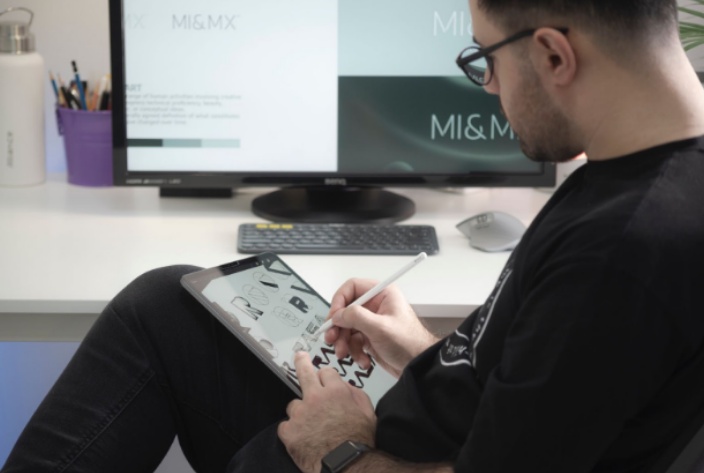Laser cutting has transformed manufacturing and crafting by delivering precise cuts efficiently. However, each cut contributes to the overall cost. Yet, there are clever design optimizations available. One effective method is intelligently connecting shared edges to reduce expenses. Let's explore how this technique can help you save on laser-cutting fees.
Understanding Laser Cutting Costs
Before delving into the specifics of joining common edges, it’s essential to grasp how laser cutting fees are determined. Laser cuts in the UK, like elsewhere, calculate costs based on several factors such as material type, thickness, intricacy of the design, and total cutting length.
Each cut and edge incurs a cost, meaning that reducing the number of cuts required for your project can significantly impact the overall expenses. This is where the concept of joining common edges becomes invaluable.
What Are Common Edges?
Common edges are the foundational building blocks in laser cutting designs, representing areas where multiple individual cuts can be merged into a single continuous line. Identifying and consolidating these edges strategically is akin to finding efficiencies in a jigsaw puzzle, allowing you to economise on the number of necessary laser cuts.
Imagine a design with multiple intricate shapes or components that share adjoining edges. Instead of treating each of these edges separately, cleverly amalgamating them into a single continuous cut can significantly minimise the total cutting length required. This reduction directly translates into cost savings, as laser cutting services in the UK typically charge based on the length and complexity of cuts.
Moreover, joining these common edges doesn’t compromise the design’s integrity; in fact, it often enhances it. By minimising the number of individual cuts, the structural integrity of the final product can be improved, creating a smoother, more robust end result. This method not only optimises costs but also elevates the overall quality of the laser-cut project, showcasing the harmony between efficient design and cost-effective production.
Tips for Joining Common Edges
1. Design with Efficiency in Mind
When creating your design, consider the layout and orientation of the components. Group together parts that share edges or lines wherever possible. This might involve rearranging elements to maximise shared edges.
2. Utilise Nesting Software
Leveraging nesting software can be immensely helpful. This software analyses your design and optimises the layout to minimise material waste and combine common edges efficiently. Many laser-cutting service providers in the UK offer advice or services that incorporate nesting software to streamline the process.
3. Implement Fillets and Rounding
Incorporating fillets or rounding the corners of your design can help merge edges and reduce the number of cuts required. These slight modifications can create smoother transitions and eliminate the need for extra cuts in certain areas.
4. Consider Tab Connections
Tabs are small extensions that connect two pieces together within a design. Strategically placing tabs where pieces meet can reduce the number of individual cuts needed and ensure proper alignment during assembly.
5. Opt for Continuous Paths
Aim to create continuous cutting paths where the laser can move from one section to another without stopping. This prevents unnecessary starts and stops, reducing processing time and, consequently, cutting fees.
6. Material Choice and Thickness
Selecting the right material and thickness can also impact cutting costs. Thinner materials often require less energy and time to cut, thereby reducing expenses. Consult with your laser cutting service provider in Manchester, UK to determine the most cost-effective options for your project.

Benefits of Joining Common Edges
- Cost Savings: Intelligently joining common edges in a laser cutting design is a fundamental strategy for cost reduction. The beauty of this approach lies in its direct impact on the bottom line. By consolidating multiple individual cuts into single continuous paths, the overall cutting length is significantly reduced. This reduction translates into tangible savings as laser cutting services in the UK often charge based on the length and complexity of cuts. Therefore, every edge merged intelligently contributes to a notable decrease in laser cutting fees, making the project more budget-friendly without compromising on quality.
- Efficiency and Time-Saving: Reducing the number of cuts through the consolidation of common edges isn’t just about cost-effectiveness; it also vastly improves efficiency in the production process. Fewer cuts mean fewer pauses and transitions for the laser cutter, streamlining the entire cutting process. This optimisation not only saves money but also expedites production timelines. Projects can be completed more swiftly, meeting deadlines and allowing for faster turnaround times. This efficiency benefit not only impacts the cost but also positively affects the overall project management, enabling businesses to handle more orders or iterations within a shorter period.
- Enhanced Design Integrity: One might assume that minimising cuts for cost reduction might compromise the structural integrity or aesthetic appeal of the final product. However, the reality is quite the opposite. Joining common edges can enhance the design’s structural strength. Excessive cuts can create weak points in the material, affecting its overall stability. By intelligently merging edges, these weak points are reduced or eliminated, resulting in a more robust final product.
This ensures that while aiming to save costs, the design’s integrity and durability are enhanced, adding value beyond just financial savings. It’s a harmonious blend of cost-effectiveness and design optimisation that elevates the entire production process.
Conclusion
Mastering the art of joining common edges is a cost-effective strategy when utilising laser cutting services in the UK or anywhere else. By incorporating these tips into your design process, you can efficiently reduce expenses while maintaining the quality and precision of your creations.
Remember, a thoughtful and strategic approach to design can go a long way in optimising costs without sacrificing creativity.
Note: The blog has originally been published on this website razorlab.online


No comments yet